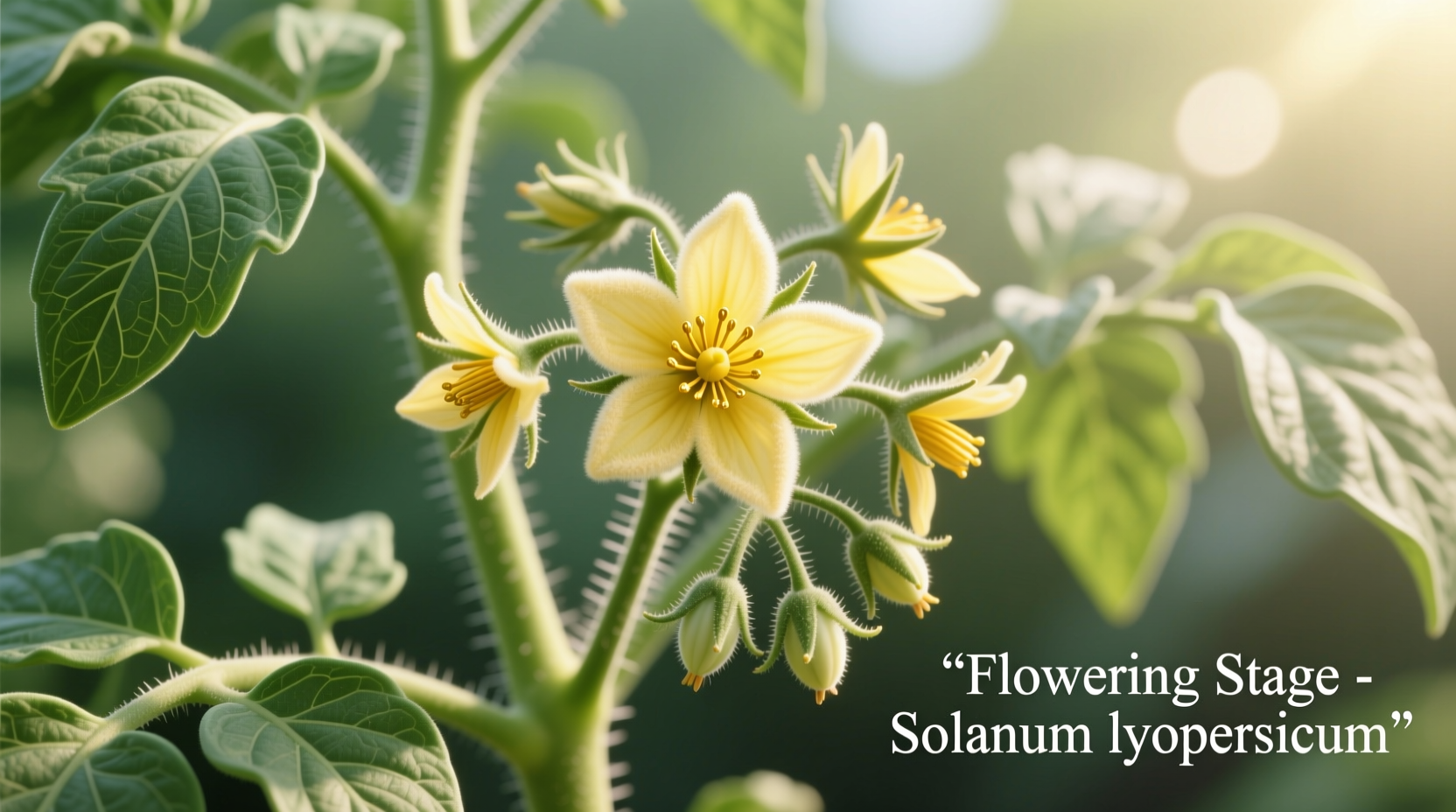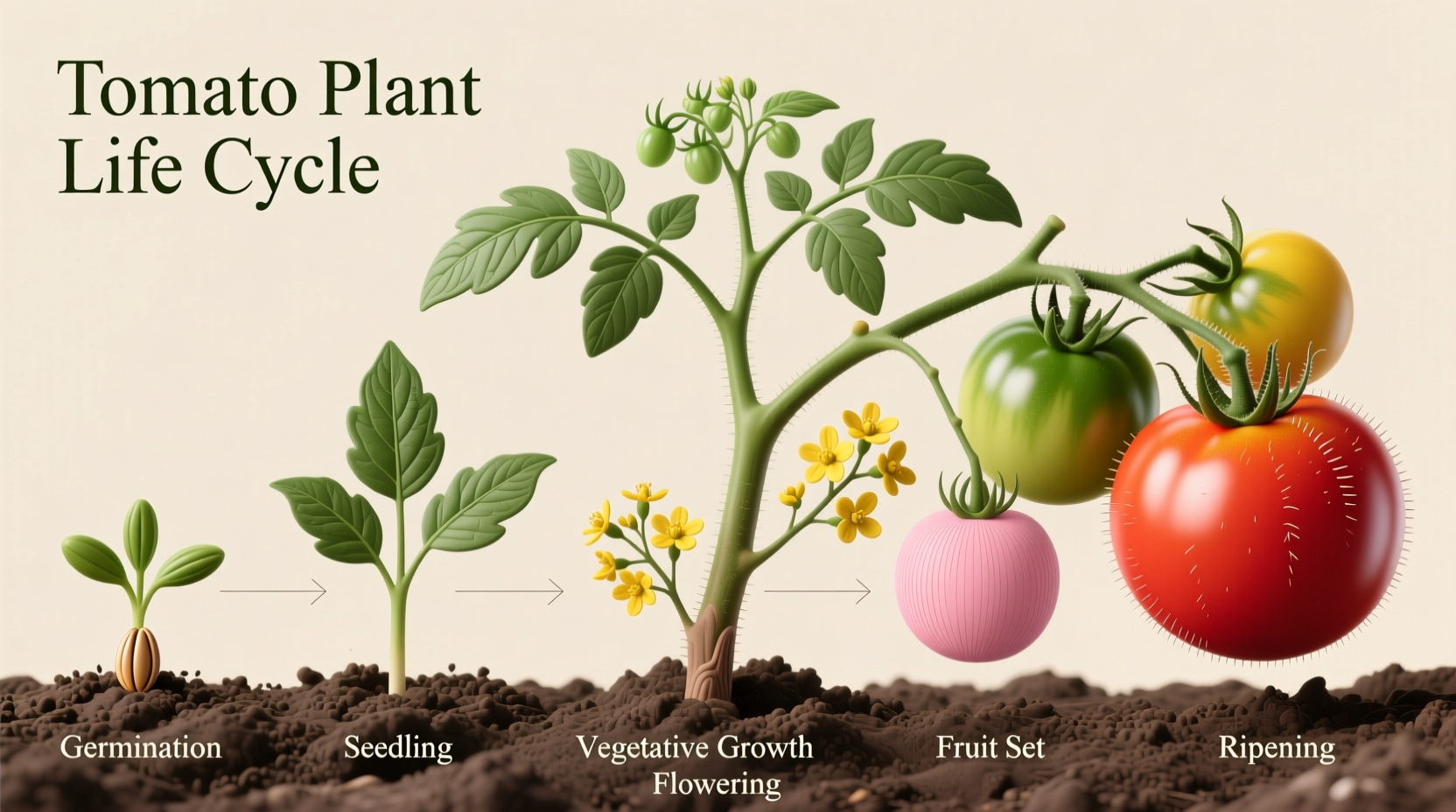The complete life cycle of the tomato plant spans approximately 60-100 days from seed to harvest, progressing through six distinct stages: germination (5-10 days), seedling development (2-3 weeks), vegetative growth (3-4 weeks), flowering (5-7 days), fruit development (20-30 days), and ripening (5-10 days). Understanding these phases helps gardeners optimize planting schedules, nutrient management, and pest control for maximum yield.
Discover exactly how tomato plants grow from tiny seeds to fruit-bearing powerhouses with this comprehensive guide. Whether you're a beginner gardener or seasoned horticulturist, understanding the natural progression of tomato plant development gives you the power to boost yields, prevent common problems, and harvest perfectly ripe tomatoes all season long. We've distilled decades of agricultural research into actionable insights you can apply immediately in your garden.
Why Understanding Tomato Plant Growth Stages Matters
Tomato plants (Solanum lycopersicum) follow a predictable biological sequence that determines their health and productivity. According to the USDA Agricultural Research Service, gardeners who align their care practices with these natural growth phases achieve up to 40% higher yields compared to those using generic gardening approaches. Recognizing each stage helps you provide precisely what your plants need when they need it most.
Stage 1: Germination (Days 1-10)
Tomato seeds begin their journey when moisture penetrates the seed coat, activating enzymes that convert stored nutrients into energy. Optimal germination occurs at soil temperatures between 70-80°F (21-27°C). Within 5-10 days, the radicle (primary root) emerges followed by the hypocotyl that pushes the cotyledons (seed leaves) above soil.
Pro Tip: Maintain consistent moisture during germination—allowing soil to dry out causes seed dormancy. The University of California Cooperative Extension recommends using bottom watering to prevent soil crusting that can hinder emergence.
Stage 2: Seedling Development (Weeks 2-5)
True leaves develop after the cotyledons, signaling the plant's transition to photosynthetic independence. During this critical phase, plants establish their root architecture and develop the first sets of compound leaves. Seedlings require 14-16 hours of bright light daily to prevent legginess.
| Seedling Stage Indicator | Optimal Condition | Problem Sign |
|---|---|---|
| Leaf color | Bright green | Yellowing (nitrogen deficiency) |
| Stem thickness | Sturdy, pencil-width | Thin, elongated (insufficient light) |
| Root development | White, fibrous network | Brown, mushy (overwatering) |
Stage 3: Vegetative Growth (Weeks 5-9)
This rapid growth phase features exponential leaf and stem development as the plant builds its photosynthetic capacity. Indeterminate varieties continue this phase throughout the season, while determinate types transition to flowering after reaching their genetically predetermined size. Proper pruning during vegetative growth directs energy toward fruit production later.
According to Cornell University's College of Agriculture and Life Sciences, tomato plants in this stage require higher nitrogen levels but benefit from gradual transition to phosphorus-rich fertilizers as flowering approaches. The critical Cornell Cooperative Extension research shows that balanced nutrition during vegetative growth increases flower set by 25-30%.
Stage 4: Flowering (Days 35-45)
Yellow blossoms appear in clusters called inflorescences, typically 5-10 flowers per cluster. Successful pollination—often aided by wind or insects—triggers fruit development. Night temperatures below 55°F (13°C) or above 75°F (24°C) can cause blossom drop, a common frustration for home gardeners.

Stage 5: Fruit Development (Days 45-75)
After pollination, tiny green fruits form and rapidly expand through cell division and enlargement. This stage requires consistent moisture to prevent blossom end rot and adequate calcium uptake. The fruit development phase varies significantly by variety—from compact cherry tomatoes (20 days) to large beefsteaks (30+ days).
The Agricultural Marketing Resource Center notes that during fruit set, tomato plants shift nutritional needs toward potassium and phosphorus. Their field studies demonstrate that potassium-deficient plants produce fruits with poor color development and reduced shelf life.
Stage 6: Ripening and Senescence (Days 75-100+)
Chlorophyll breaks down as lycopene and carotenoids develop, creating the characteristic red color (or yellow/orange in heirloom varieties). Ethylene gas triggers the ripening cascade, softening cell walls and converting starches to sugars. Determinate varieties complete their life cycle after this stage, while indeterminate types continue producing flowers and fruit until frost.
Gardeners often wonder whether to pick tomatoes at the "breaker stage" (first color change) or let them ripen on the vine. Research from the University of Florida's Institute of Food and Agricultural Sciences shows that vine-ripened tomatoes develop 20% higher sugar content but have shorter shelf life. Their comprehensive guide recommends harvesting at breaker stage for optimal balance of flavor and storage.
Complete Tomato Plant Life Cycle Timeline
Understanding the temporal progression helps gardeners anticipate needs and troubleshoot problems:
| Growth Stage | Duration | Critical Care Requirements | Common Challenges |
|---|---|---|---|
| Germination | 5-10 days | Consistent moisture, 70-80°F soil | Damping off, poor emergence |
| Seedling | 2-3 weeks | Bright light, moderate nitrogen | Leggy growth, nutrient deficiencies |
| Vegetative | 3-4 weeks | Higher nitrogen, proper pruning | Excessive foliage, pest infestations |
| Flowering | 5-7 days | Balanced nutrients, proper temps | Blossom drop, poor pollination |
| Fruit Development | 20-30 days | Consistent moisture, calcium | Blossom end rot, cracking |
| Ripening | 5-10 days | Reduced watering, potassium | Splitting, pest damage |
Maximizing Your Tomato Harvest Through Life Cycle Management
Successful tomato growing requires aligning your gardening practices with each developmental stage. Start seeds indoors 6-8 weeks before last frost date for optimal timing. When transplanting, bury the stem up to the first true leaves to encourage additional root growth along the buried portion—a technique validated by North Carolina State University's horticultural research.
Monitor plants daily during flowering and fruit set, as this is when most problems emerge. Implement preventative measures like mulching to maintain consistent soil moisture and reduce disease transmission from soil splash. Rotate crops annually to prevent soil-borne diseases that target plants in the nightshade family.











 浙公网安备
33010002000092号
浙公网安备
33010002000092号 浙B2-20120091-4
浙B2-20120091-4